Crazy Hack To Boost Your Jade Plant Health: Adding Black Pepper
In the quirky world of gardening, where every grandma’s tale and internet hack vie for your attention, sprinkling black pepper around your jade plant has emerged as the eyebrow-raising, yet oddly compelling, tip of the season.
Yes, you’re not misreading—black pepper, the same stuff you sprinkle on your eggs, might just be the secret ingredient your jade plant has been craving.
But before you start seasoning your succulents like a breakfast skillet, let’s take a closer look into why this peculiar advice isn’t as peppery as it sounds.
At first glance, turning your jade plant into a spice rack experiment might seem like the last chapter in “Desperate Gardening Hacks,” but there’s a method to the madness.
The jade plant, a resilient and glossy green succulent, thrives with minimal fuss, but like all plants, it faces its share of fungal foes and pesky pests.
Here’s where our humble kitchen spice steps into the limelight, not as a flavor enhancer, but as a guardian of greenery.
Stick around as we unpack how a dash of black pepper could be the unsung hero of your indoor garden.
Getting To Know Your Jade Plant
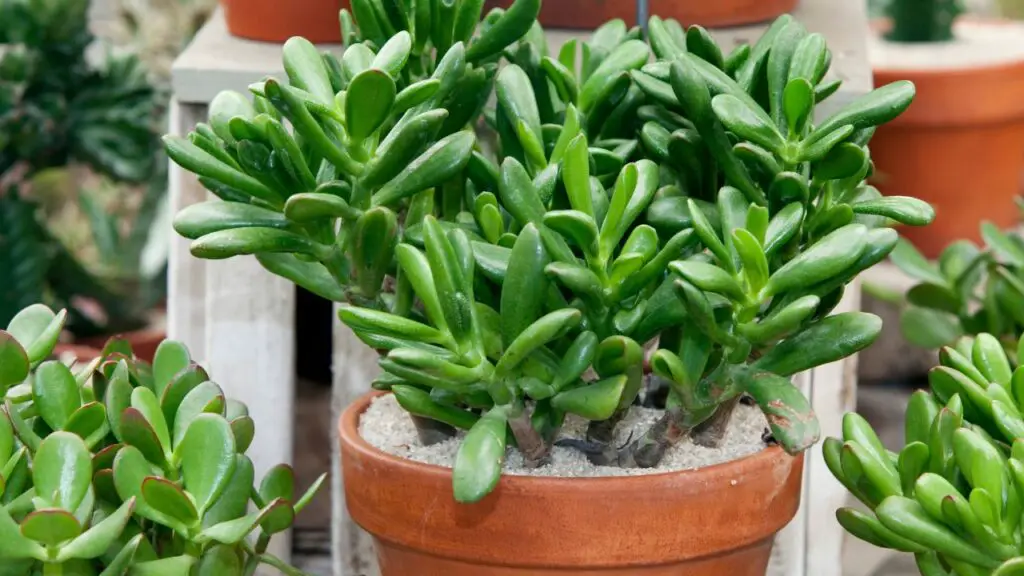
Characteristics and Care
The jade plant, with its thick, woody stems and oval-shaped leaves, truly stands out as a resilient indoor companion.
Hailing from the succulent family, it thrives in conditions that mimic its native dry, desert environment.
You’ll find that providing plenty of sunlight, minimal water, and well-draining soil is key to a happy jade plant. It’s a low-maintenance gem, requiring less attention than most houseplants.
However, it does enjoy a bit of pampering with occasional fertilizing and, importantly, room to grow.
Repotting every couple of years allows it to stretch its roots and continue its steady growth.
Remember, jade plants favor being root-bound in snug pots, so don’t be too hasty to give it more space than necessary.
Common Problems and Solutions
Even with their unbending nature, jade plants can encounter some hiccups.
Overwatering is a common misstep leading to root rot, a condition the plant is particularly susceptible to.
Ensuring your jade is in a pot with ample drainage can prevent this tragedy.
On the pest front, mealybugs and spider mites can occasionally hassle your jade plant.
Wiping the leaves with a cotton swab dipped in rubbing alcohol can combat these pests effectively.
Fungal and bacterial problems, like powdery mildew and soft rot, may also arise.
This is where the unconventional tip of incorporating black pepper into your plant care comes into play.
Sprinkling black pepper around the plant acts as a natural deterrent against such infestations.
Its antibacterial properties help safeguard the jade from these ailments and can even repel curious pets that might otherwise see your plant as a snack or toy.
This method, though seemingly unusual, fits seamlessly into the holistic care of your jade plant, adding an extra layer of protection with a common kitchen spice.
The Role of Black Pepper in Gardening
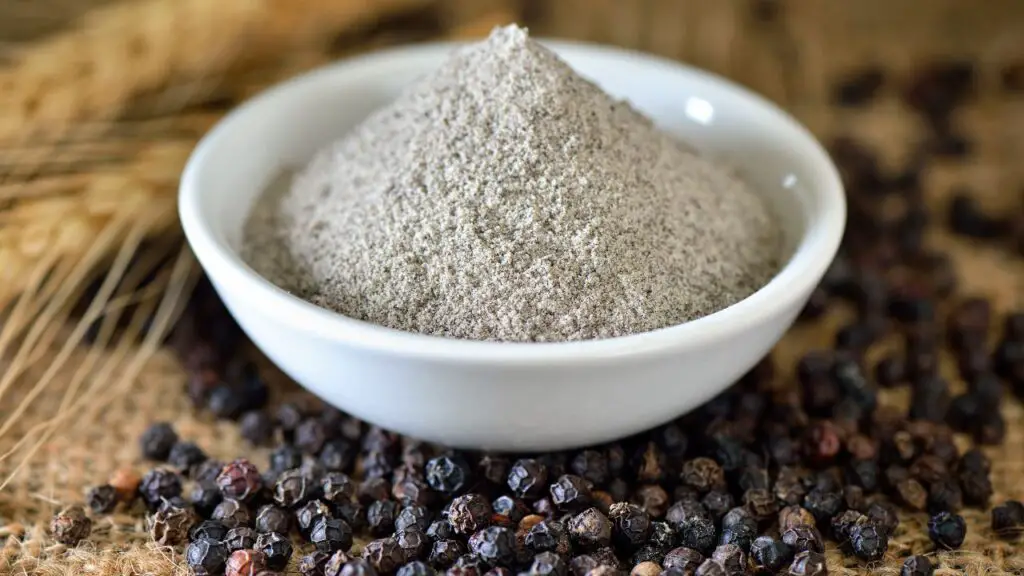
As a Natural Fungicide
Black pepper isn’t just a kitchen staple; it’s also a powerful ally in your garden, especially for your jade plants.
The piperine compound in black pepper acts as a natural fungicide.
Sprinkling black pepper around your plant creates a barrier that protects against fungal infections.
This layer of protection is key for jade plants, as they’re prone to issues like root rot if their environment becomes too damp or if harmful fungi take hold.
Insect and Ant Repellent Properties
Apart from its fungicidal abilities, black pepper serves as an effective insect and ant repellent.
The strong, pungent aroma and taste of the pepper deter many insects and ants, keeping them away from your precious plants.
By incorporating black pepper into the soil or spreading it around the plant base, you’re setting up a no-fly zone for pests.
This method is especially beneficial for protecting the jade plant’s root system from ants and other insects that can cause damage.
Enhancing Soil Health
Black pepper does more than just ward off pests and diseases; it also contributes to healthier soil.
The antibacterial properties of the spice help reduce the spread of plant-to-plant diseases in your garden.
By adding black pepper to your soil, you’re not only keeping pests at bay but also aiding in the maintenance of a clean and disease-resistant environment.
This ensures that your jade plants and other garden residents thrive in optimal conditions.
Protecting Plants From Pets
The zesty black pepper can help keep curious pets away from your plants.
If you’ve got a furry friend who can’t resist nibbling on your jade plant or digging through your garden, sprinkling black pepper around your plants acts as a gentle but effective deterrent.
Pets are usually put off by the strong scent and will likely stay clear of treated areas, helping to keep your garden plants safe and sound.
Adding Black Pepper to Your Jade Plant
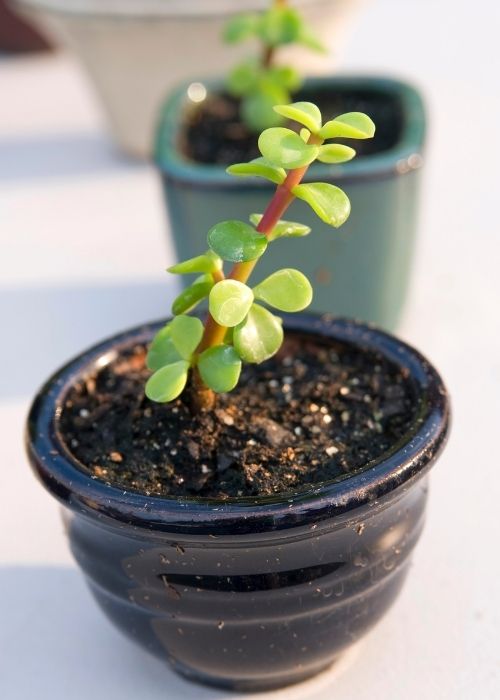
Preparing the Black Pepper Mixture
First things first, let’s whip up your black pepper mixture.
Grab ground black pepper from your kitchen; there’s no need for anything fancy here.
You’ll want to create a mix that’s potent enough to fend off those unwelcome garden visitors but gentle on your jade plant.
Combine one teaspoon of ground black pepper with about two cups of water.
Stir this concoction until the pepper is evenly dispersed throughout the water.
The idea is to make a pepper “tea” that’s going to act as a natural barrier against pests and fungal threats.
Application Guidelines
You’ve got your pepper mixture ready to go, but how do you use it effectively?
First, ensure your jade plant is in a well-ventilated area, especially if you’re applying this indoors – you don’t want to sneeze every time you pass by.
Pour your pepper mixture into a spray bottle for easy application.
Gently mist the soil around the base of your jade plant, avoiding the leaves to prevent any potential sunlight magnification issues which can cause leaf burn.
For ongoing protection, apply this pepper solution once every two weeks.
It’s a mild yet effective preventive measure that won’t harm your plant if used correctly.
Plus, it’s a great way to use up that black pepper that’s just sitting in your pantry.
Potential Benefits and Risks
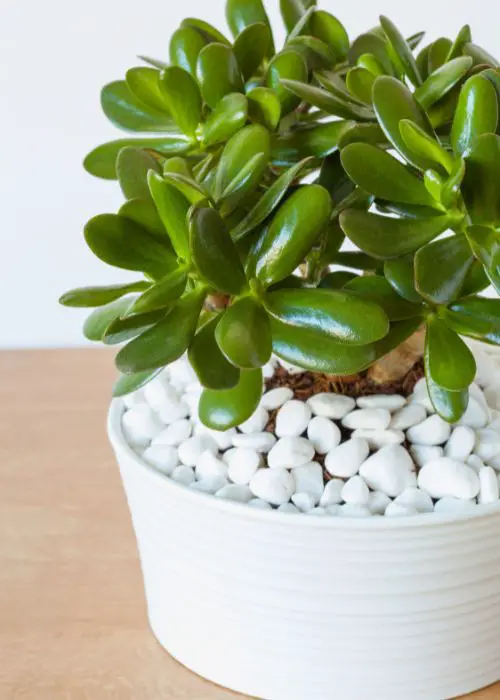
Growth Promotion and Thicker Leaves
When you add black pepper to your jade plant’s care regimen, you’re giving it a subtle growth boost.
Black pepper contains compounds like piperine, which not only repel pests but might also play a role in promoting plant vigor.
By creating a more hostile environment for pests, your jade plant can focus its energy on growth rather than stress responses.
Anecdotal evidence suggests that plants exposed to mild, natural insecticides like black pepper can develop thicker leaves and more robust stems, most likely due to decreased pest interference and stress.
Concerns and Precautions
However, it’s key to approach this method with caution.
While black pepper is a natural substance, too much of it can potentially harm your jade plant.
The essential oils and alkaloids in black pepper, beneficial in small quantities, can be phytotoxic if applied excessively.
This means they can cause leaf burn or more severe damage to your plant if not diluted properly or applied too frequently.
To mitigate these risks, always dilute the black pepper in water as previously described, and limit its application to once every two weeks.
Pay close attention to your jade plant’s reaction over time. If you notice any signs of distress, such as leaf discoloration or dropping, it’s time to rinse off the pepper solution and reassess your pest management strategy.
Remember, every plant is unique, and what works as a preventive measure for one might not be suitable for another.
Always err on the side of caution to keep your jade plant healthy and thriving.
Propagation Techniques for Jade Plants
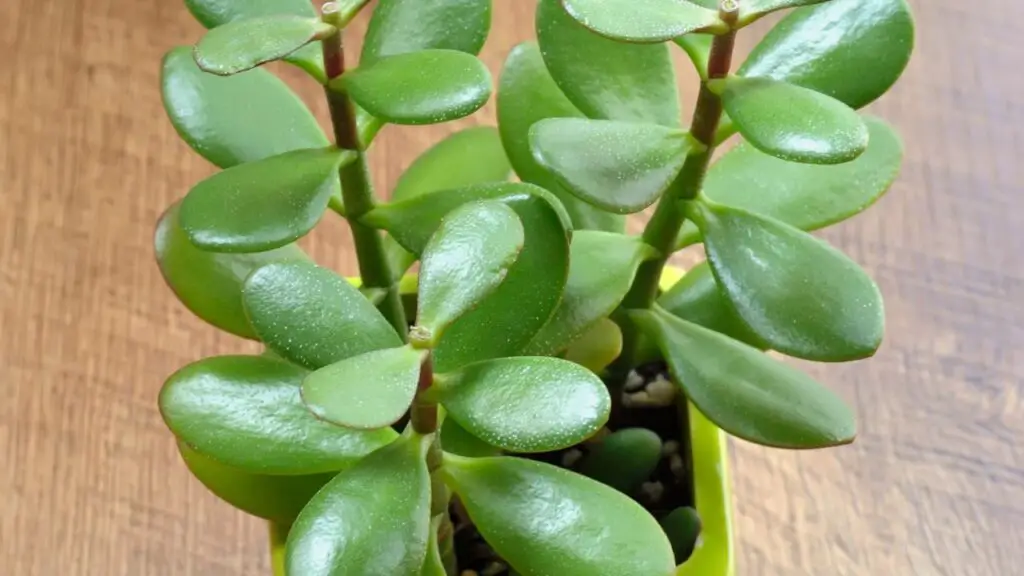
Using Stem Cuttings
Propagating jade plants from stem cuttings is straightforward, especially if you’ve given your plant the occasional pruning.
Here’s how to do it effectively: first, select a healthy stem that’s about 2 to 4 inches long, ensuring it has at least two leaves.
The best time to cut is just above a leaf node, which increases the chances of successful rooting.
Once you’ve got your cutting, let it dry out for about a week in a warm spot. This step allows the cut end to callous over, preventing rot and promoting rooting.
After the callous forms, prepare a pot with a self-draining system filled with succulent-friendly soil.
Moisture is critical at this stage, so ensure the soil is damp (but not waterlogged) before planting.
Gently insert the stem cutting into a small hole in the center of the soil. If it doesn’t stand on its own, a small stake or straw can provide necessary support.
Place the pot in an area with bright, indirect sunlight; this lighting condition is ideal for rooting and growth. Patience is key, as it may take some time for the cutting to take root firmly.
Using Leaf Cuttings
Leaf cuttings offer another efficient way to propagate jade plants.
Choose a large, plump leaf, ensuring it’s healthy and undamaged.
Gently twist or peel the leaf from the stem, aiming to retain as much of the base as possible.
Like stem cuttings, it’s key to allow the leaf to dry and callous over, though this typically takes a shorter period – just a couple of days.
When you’re ready to plant, fill a small pot with the same succulent mix used for stem cuttings.
After watering the soil lightly, press the leaf’s cut end into the soil at a slight angle.
Most of the leaf should remain above the soil to prevent rot.
Hormones can speed up the rooting process if applied shortly after cutting; just dust the leaf’s cut end before it dries.
Remember, propagating from a leaf can take longer compared to stem cuttings, so patience is even more key.
Keep the pot in a bright area with indirect sunlight and wait for the magic to happen.
Both methods rely on the resilience and easy-care nature of jade plants.
Whether you choose stem or leaf cuttings, the process is rewarding and contributes to the sustainable growth of your jade plant collection.
The Takeaway
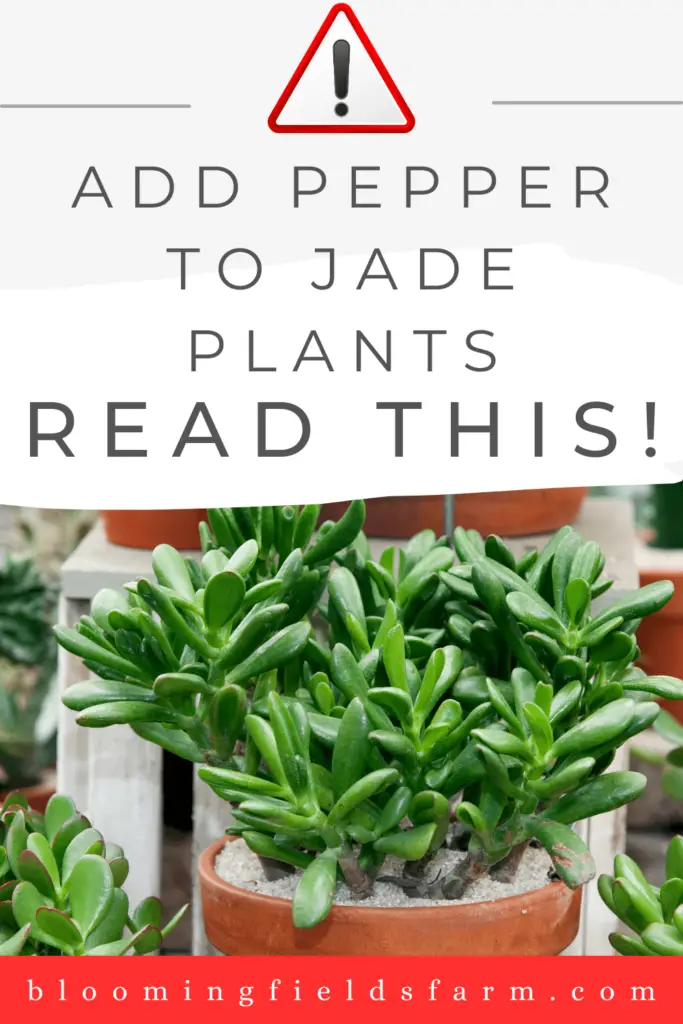
Incorporating black pepper into your jade plant care routine offers a fascinating twist on traditional gardening practices.
It’s an innovative method that leverages natural substances to support the health and vigor of your plants.
When it comes to keeping pests at bay and fostering a disease-resistant environment, black pepper proves to be a valuable ally.
Its insecticidal properties, stemming from compounds like piperine and piperylin, deter various pests without harming your jade plant.
Mindful application is key. You’ll want to ensure the mixture is diluted properly to avoid any adverse effects on the plant’s health due to the potent essential oils and alkaloids present in black pepper.
A light sprinkling around the base of the plant or a diluted spray on the leaves should do the trick, helping to maintain that perfect balance of protection without overwhelming your jade.
Adding black pepper to your gardening toolkit can also complement other care strategies for your jade plant, including propagation techniques like stem and leaf cuttings.
It’s all about creating a nurturing environment that allows your jade to thrive, showing off its lush, green beauty.
Whether you’re a seasoned gardener or new to the game, experimenting with black pepper might just be the edge your jade plant needs to flourish.
Don’t hesitate to experiment with the amount and frequency of black pepper application to find what works best for your jade plant.
As you combine this natural pest deterrent with proper sunlight, minimal watering, and suitable drainage, you’re setting the stage for success.
Your jade plant will thank you for the extra care, growing robustly as it adds a touch of green elegance to your space.